In a renewably powered future, how will the grid cope when the sun isn’t shining and the wind isn’t blowing? Rachel Brazil looks at the options
Getting to net zero isn’t just about shifting to low-carbon renewable energy sources, it will also need massive increases in our energy storage capacity. ‘There will be periods where renewable energy generation is in excess of demand and periods where demand can’t be met by generation. The goal for energy storage is to try and bridge that gap,’ says Emma Woodward, an analyst at the global energy analytics company, Aurora Energy Research. According to the UK’s National Grid, the country will need energy storage capable of supplying 50GW by 2050 to ensure a balance in supply and demand. The whole of Europe will likely need more than 400GW, but current storage is now below 10% of that capacity according to Oliver Schmidt, a visiting researcher in clean energy economics at Imperial College London, UK.
In 2021 there was estimated to be only 27GW of power from energy storage available globally. But the problem is more than just increasing capacity – we currently don’t have the established technologies necessary for the task. We are at a point where there are ‘thousands of concepts’ says Schmidt, including systems that use gravity, heat and electrochemistry, all providing alternative methods, but most still unproven at scale. So can we find the right technology for the task and can we do it quickly enough?
The energy storage technology most widely deployed now is pumped hydroelectric power – a 19th century technology, where water is pumped from a lower to higher reservoir and released through a turbine to generate electricity when needed. The UK currently has less than 3GW capacity. ‘Something like 24 [further] sites have been identified, mostly in Scotland or in north Wales,’ says Woodward, ‘but it is very expensive, with very high upfront cost.’ Plus it needs sites with the right geography, which are limited and often correlate to areas of natural beauty, far away from areas of high demand.
Storing renewable energy isn’t the only way we will reach net zero. As well as reducing our energy consumption there is also a push towards interconnecting electricity grids across Europe and ultimately even across the world, so renewable energy can be moved to where it’s needed. 2021 saw the North Sea Link begin operating, a 720km 1400MW sub-sea interconnector linking the UK and Norway electricity systems, and adding to existing links to Belgium, France and the Netherlands. ‘It is definitely part of the solution,’ says Woodward, but it can’t guarantee a supply – storage capacity will still be crucial.
Batteries and physics
Lithium-ion batteries are the one storage technology that has made progress in the last decade (see Building better batteries). ’There’s been massive investment going into this technology simply because [of] electric vehicles,‘ says Schmidt. But while the lithium-ion battery is king for short-term storage – up to four hours – the technology isn’t ideal for the medium- to long-term storage that the grid needs. The batteries suffer from power fading over multiple cycles, limiting their lifetimes, and there are also safety and reliability issues – a number of fires caused by thermal runaway have been reported, such as the major data centre fire in Pangyo, South Korea, in 2022 which caused disruption to internet service for days.
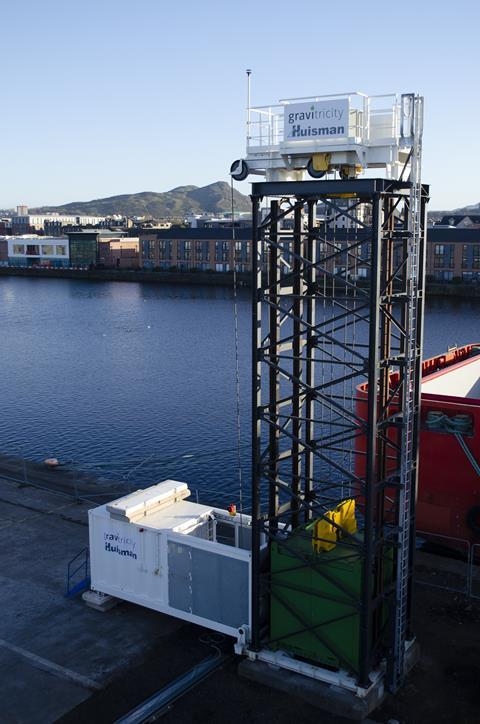
With lithium prices rising (see The lithium rush), the costs are likely to be too high for long-term storage, which Schmidt defines as ‘any technology that is economic when discharging for more than eight hours’. One alternative idea is to use gravity in ways that are less geographically limited than pumped hydrothermal systems. It can be as simple as using a crane to lift concrete blocks. Schmidt says it’s a little more sophisticated than it sounds but has the advantage of using ‘super cheap materials’. One such project comes from Edinburgh-based Graviticity, who plan to cite their storage in disused mineshafts. In 2021 the company constructed a 250kW grid-connected demonstration project at the Port of Leith, using a 15m high rig with two 25 tonne weights suspended by steel cables.
Another concept is storing energy in compressed gases, which can be released to drive a turbine. This is also not new – the first compressed air plant was built in 1978 in Huntorf in Germany, where the air is housed at a pressure of 100 bar in 310,000m3 salt caverns, 600m deep. It can power a 320MW turbine to produce two hours’ worth of electricity. In the UK, the technology is being developed, including a project proposing the air is stored in deep ocean bags, attached to the seabed, with the water above acting to pressurise the system.
A large part of the solution is likely to be electrochemical, says Pasidu Pallawela, founder and chief technology officer of Edinburgh-based battery developer StorTera, because this can provide more flexible systems that can be installed in any location. The current landscape is ‘very noisy,’ says Pallawela, with many labs claiming they have the right technology to crack the problem. But from his experience, most will reach ‘a valley of death’. ‘Even if you have a great working battery, it’s so difficult to take it out there and install in a custom location. There’s so much to do to get to that point.’
‘Eventually, every technology will come down to how much it costs you to store one kilowatt hour,’ says Stefano Mezzavilla, chemistry lead at battery developer RFC Power. And that is where some electrochemical systems that use expensive and scarce metals fall down. Batteries making use of cheaper metals are receiving a lot of attention, says Schmidt, including an iron-air battery from US-based Form Energy which has been designed to store electricity for 100 hours using only iron, water and air. The company describe the electrochemical process as ‘reversible rusting’, supplying oxygen to discharge the battery, converting iron metal to rust and using an electrical current to charge the battery and reverse the reaction. Toronto-based e-Zinc have developed a similar system using zinc, where charging the battery deposits the metal onto electrodes from a basic solution of zincate ions, periodically wiping off the metal which falls through to another chamber where it can be re-oxidised by air to discharge the battery.
Enter the flow
There is also intense activity around redox flow batteries – which use reduction and oxidation reactions but store the redox-active species in two liquid electrolyte solutions. These are pumped through a central stack containing inert electrodes separated by a membrane. The oxidised and reduced products are kept in separate external reservoirs, where they can sit until the battery needs to be charged or discharged. ‘In principle, they are infinitely scalable, because you decouple the storage of the fuels from the electricity generation pod,’ explains Clare Gray, a materials and battery chemist from the University of Cambridge, UK.

Redox flow batteries could be the ideal technology for energy storage. ‘They’re very flexible compared to these things that need salt caverns and big geographical spaces,’ says Kathryn Toghill, an electrochemist at Lancaster University in the UK. Plus they can deliver back electricity very quickly to respond to demand. They have a longer life than lithium-ion batteries because there are no structural changes at the electrodes to interfere with performance. ‘If you have a fading capacity, you can top up the tank, which is clearly less disruptive than replacing a stack,’ says Mezzavilla.
The next step is finding the right chemistry to optimise the energy density of flow batteries. One important element is choosing substances that have high solubility to increase the concentration of active species. In aqueous solution the cell needs to run at a potential where water is stable or it will itself electrolyse. According to Gray, this means that ‘you’ve only got about 1.2V to play with’.
The most commercially advanced redox flow battery technology is the vanadium redox flow cell. Several companies are already supplying these batteries, including Invinity Energy Systems, created in 2020 through the merger of flow battery companies based in the UK and US. In this aqueous system the positive half-cell electrolyte contains VO2+ and VO2+ ions, switching from vanadium v and iv oxidation states, while the electrolyte in the negative half-cells contains V3+ and V2+ ions, cycling between vanadium ii and iii oxidation states. Having vanadium species in both half cells has the added benefit of limiting the impact of ‘crossover’ – when ions diffuse across the membrane. In some systems this can lead to electrolyte poisoning and battery discharge.
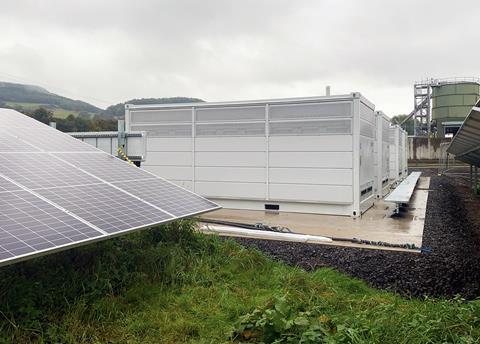
Invinity say their battery can provide up to 40MWh of storage, run from 2–12 hours and deliver 3.8 times the lifetime energy throughput of a lithium-ion battery. To date they have supplied units to over 70 sites across 15 countries, including a 5MWh battery for an energy superhub in Oxford, which is expected to cut 25,000 tonnes of CO2 emissions in the city per year by 2032. For grid applications, the largest vanadium flow battery facility is in Dalian in northeast China which has been in operation since 2022. Costing $266m, it has a capacity of 400MWh, with a second phase to double that capacity in the works.
Baser metals
Cost is still the major issues that may limit how extensively flow batteries are used for grid storage. ‘With flow batteries, I can just put a massive tank and then it was discharged for 100 hours, but I also have to pay for the material ,’ says Schmidt. Although more abundant than lithium, vanadium is still expensive and on the EU’s list of critical raw materials, which are of economic importance but have high supply risk.
But there is more vanadium in the earth’s crust than copper, according to Adam Tuck, Invinity’s director of technology, and an increased demand will lead to increased production, as well as recycling of the batteries themselves. ‘The electrolyte doesn’t degrade, so even after the end of the 25 year life of the battery itself, we can just take that and put it right back into a new battery,’ he says.
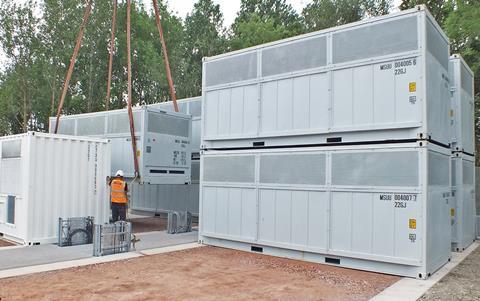
In spite of this, ‘there’s a big push to try and find alternatives to the vanadium’, says Toghill. Imperial College spin-out RFC Power is using a manganese electrolyte in a hybrid redox flow system that combines a Mn 2+/3+ redox half-cell in an acidic electrolyte, with hydrogen gas. During charging and discharging the hydrogen gas is reduced and oxidised, with protons moving across the membrane.
Using manganese – already commonly found in disposable alkaline batteries – instead of vanadium makes a kilowatt hour of storage at least 10 times cheaper, according to Mezzavilla. When charging the manganese is oxidised and hydrogen gas is produced at the negative electrode, with the reverse reaction occurring on discharge. Using a gas rather than a second liquid electrolyte also eliminates the risk of crossover as the reactants are in two different phases.
The technology could also be future-proofed if a hydrogen economy were to become a reality, with hydrogen widely used as a fuel. ‘It could be very interesting to couple the hydrogen that we are using to the hydrogen infrastructure that could be in place,’ says Mezzavilla. He can see a future scenario where chemical plants could use such batteries to store both energy and hydrogen as a chemical feedstock: ‘using hydrogen opens up a lot of opportunities’.
RFC Power is now moving towards commercialisation. They have been working with Shell to improve their battery performance, and with investment from Imperial fuel-cell spin-out CERES Power are developing a kilowatt-level demonstrator which they expect to be operational by 2024.
Still in the realms of basic research, transition metal oxide cluster complexes are also electrolyte candidates, with high stabilities, solubilities and redox chemistries. Toghill says she favours all-iron batteries because ‘[iron] shifts its redox potential considerably depending on the ligand it’s paired with.’ Her group are researching systems pairing a commonly used non-toxic ferro–ferricyanide electrolyte with iron triethanolamine or triisopropanolamine complexes, although she admits solubility is currently too low.
Hybrid approach
Others are moving towards organic materials, to create more sustainable metal-free flow batteries. But it isn’t easy to find a system that can compete with the 20 plus years of development that have gone into vanadium flow batteries already. ‘Newer materials that have been produced and explored always have some caveats,’ says Toghill, including the poor long-term stability of the molecules or side reactions that will be detrimental to the cells’ energy capacity.
Finding organic species with solubility in the 1–2M range to provide a high charge density is ‘in itself is a challenge’, says Gray. Adding ionic side chains to molecules can increase solubility, but also risks increasing the viscosity too much. She has been working with Michael Aziz, a chemist at Harvard University in the US, on his quinone-based flow battery which pairs an anthraquinone half-cell with the ferro-ferricyanide couple in basic aqueous solution. His best-performing system so far uses a singly substituted 2,2-propionate ether anthraquinone (2-2PEAQ) whose methyl side chain gives it improved solubility making it a good prospect for a grid-scale organic redox flow battery.
It’s a beautiful hybrid between a lithium-based battery and a traditional flow battery
Not everyone has given up on lithium for grid storage: the lithium–sulfur battery has been around since the 1960s and has a theoretical capacity three times that of the lithium-ion battery. But several factors have hampered their developed as traditional batteries, including the dissolution of intermediate lithium polysulfide species in the electrolyte – known as ‘the polysulfide shuttle’ effect – causes rapid capacity loss and huge volume expansion at the cathode as sulfur reacts. But StorTera are finding ways round these problems with their polysulfide redox single liquid battery.
‘It’s a beautiful hybrid between a lithium-based battery and a traditional flow battery,’ says inventor Pallawella. The battery consists of a solid lithium metal anode with an alkali polysulfide cathode remaining in solution. The electrochemical reaction occurring is complex, involving at least 14 electron transfers and various polysulfide ions. To avoid the power losses of traditional lithium–sulfur battery design, the redox active polysulfite species can be constantly refreshed. The clever design has produced a battery smaller than other flow batteries, but with an improved lifetime to conventional lithium-ion batteries.
Pallawella says their energy density hovers around 200Wh per litre, which compares well to the 25–50Wh per litre capacity of vanadium redox flow batteries, and he expects they can improve on this with further development. Costs are also competitive, because sulfur is cheap – he estimates levelised or lifetime costs of 1–1.2p per kWh which is cheap enough to start to enable widespread use alongside renewable energy resources. In 2022 StorTera secured £5 million from the UK government to install a megawatt long-duration demonstrator battery at the Midlothian Innovation Centre near Edinburgh. By 2024 they expect it to be operating for up to eight hours a day, with an expected 30-year lifespan.
Logistical challenges
Even conventional lithium-ion batteries shouldn’t be completely discounted for longer-term grid storage, says Schmidt, ‘I wouldn’t underestimate the chance that there’s a breakthrough here, which suddenly means lithium-ion [batteries] are suitable for long duration storage,’ although he admits it’s probably a long shot. Lithium-ion batteries are still likely to play an important role in shorter term grid storage – in 2021, for example, the Australian state of Victoria installed a utility-scale facility powered by Tesla’s lithium-ion batteries which has enough capacity to power one million homes for half an hour after a grid failure.
There is no one size fits all for energy storage
Developing grid-storage technologies is expensive and the route to commercialisation is not simple. ‘Now it’s convincing the market that we are a worthy investment, from a technology and capability standpoint,’ says Matthew Walz, vice-president of business development at Invinity Energy Systems. ‘It is pretty widely recognised that there is a need for some sort of policy support,’ says Woodward, but it is likely to be through backing and commercial guarantees rather than direct subsidies. One tool that was used for the roll-out of grid interconnector technology is the ‘cap and floor’ mechanism, which provides a minimum floor on returns for investors, under which revenue would be topped up, but coupled to a maximum revenue cap. The UK government is yet to decide on this, but Woodward says ‘more than anything, what people need is clarity… to know what sort of environment they’re going to be operating in and what sorts of support will be available.’
With so many potential solutions in the mix, are we likely to see one eventually becoming dominant? ‘I don’t think we have a clear winner,’ says Gray. Mezzavilla thinks many electrochemical systems are still in their infancy and we can expect large improvements in cost and performance.
Ultimately, Walz says, ‘there is no one size fits all for energy storage’. The grid will need shorter term storage, in the region a few hours, to help smooth the variability of renewables generation all the way through to large scale seasonal storage. Flow batteries like Invinity’s are likely to provide medium-term storage capabilities that allow for charging and discharging several times a day and Walz thinks once we have this capability we have 95% of the solution. Schmidt agrees that flow batteries will be ‘the workhorses’ that will allow us to successfully transition to a predominantly renewable energy infrastructure.
For longer duration storage there is still everything to play for. ‘I think eventually, there will be one [dominant technology],’ says Schmidt. ‘Someone will be the winner here and that’s going to be very interesting to see in the next few years’.
Rachel Brazil is a science writer based in London, UK
Updated 26 April 2023 to clarify the future power needs
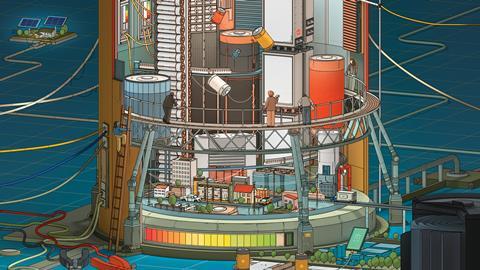
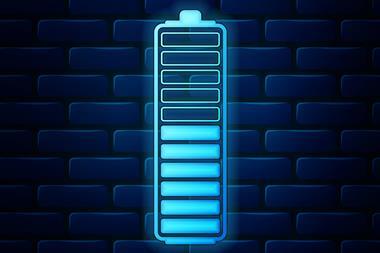


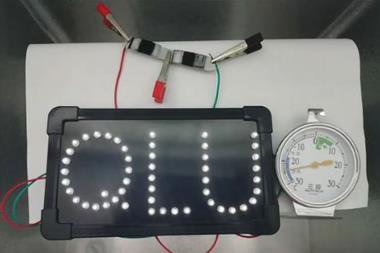

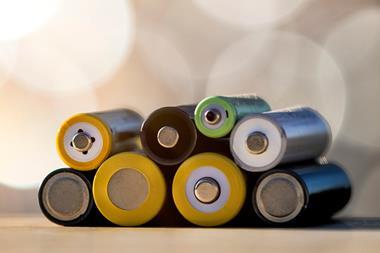






No comments yet